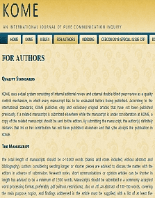
KOME-An International Journal of Pure Communication Inquiry
Scope & Guideline
Bridging Disciplines in the Study of Pure Communication
Introduction
Aims and Scopes
- Interdisciplinary Communication Research:
The journal promotes research that intersects various fields such as sociology, psychology, media studies, and cultural studies, encouraging a comprehensive understanding of communication phenomena. - Analysis of Digital Communication:
A significant focus on how digital platforms, including social media and online communities, shape communication practices, identities, and social interactions. - Crisis Communication and Public Health:
Research related to communication strategies during crises, particularly in public health contexts such as the COVID-19 pandemic, examining how information is disseminated and perceived. - Cultural Representation and Identity:
Exploration of how different cultures are represented in media and communication, including studies on national identity, populism, and visual narratives. - Youth Engagement and Education:
Investigating the role of communication in educational settings, particularly how young people engage with content both online and offline.
Trending and Emerging
- Impact of Social Media on Identity:
There is a growing interest in how social media influences self-concept and identity formation, particularly among youth, indicating the relevance of digital environments in shaping personal and social identities. - Crisis and Health Communication:
The COVID-19 pandemic has led to increased research on health communication strategies, illustrating the importance of effective messaging in crisis situations and its impact on public perception. - Visual Communication and Media Narratives:
Emerging studies highlight the role of visual identity in media perception, suggesting a trend towards understanding how visual elements affect communication and audience engagement. - Misinformation and Fact-Checking:
With the rise of digital communication, there is an increasing focus on misinformation, fact-checking, and the role of media in shaping public discourse, reflecting growing concerns about media credibility. - Youth Participation in Digital Communities:
Research exploring youth engagement in online social communities is on the rise, emphasizing the significance of digital spaces in fostering social interaction and civic involvement.
Declining or Waning
- Traditional Journalism Studies:
Research focusing solely on traditional journalism practices and ethics appears to be less frequent, possibly indicating a shift towards more digital-centric studies. - Static Media Analysis:
Themes exploring media content in a static context, without consideration of audience interaction or engagement, seem to be declining as the field moves towards dynamic media environments. - Regional Studies in Isolation:
Studies that focus exclusively on regional communication issues without a comparative or global perspective are becoming less common, suggesting a trend towards more transnational analyses.
Similar Journals
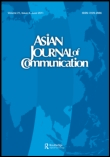
Asian Journal of Communication
Advancing Communication Studies Across AsiaThe Asian Journal of Communication, published by Routledge Journals, Taylor & Francis Ltd, is a premier scholarly platform dedicated to advancing the field of communication studies. Established in 1990 and continuing its impactful publication journey through 2024, this esteemed journal caters to a broad spectrum of interdisciplinary research, addressing critical issues in communication, media, and education in an Asian context. With an impressive impact factor and ranked in the top quartiles in both Communication (Q1) and Education (Q2), the journal is recognized for its rigorous peer-review process and its commitment to quality scholarship. Researchers, professionals, and students can access invaluable insights and innovative research trends, helping to bridge gaps and foster understanding across diverse communication practices. The journal is accessible through institutional subscriptions and promotes global discourse, making it an essential resource for anyone engaged in the vibrant field of communication.

CIC-Cuadernos de Informacion y Comunicacion
Cultivating Global Perspectives in Communication ScholarshipCIC-Cuadernos de Informacion y Comunicacion is a leading academic journal published by the Universidad Complutense de Madrid, serving as a vital resource for scholars and practitioners in the fields of information and communication studies. Launched in 1995 as an Open Access journal, it provides an invaluable platform for disseminating innovative research and critical analysis related to communication theory, media studies, and information technology. With its focus on fostering interdisciplinary dialogue, CIC encourages submissions that explore contemporary challenges and advancements in the information landscape. Although the H-index and Scopus rankings are currently not specified, the journal’s commitment to excellence and accessibility positions it as an important contributor to academic discourse. The journal is based in Madrid, Spain, and aims to reach a global audience of researchers, professionals, and students dedicated to furthering knowledge in the rapidly evolving domains of communication and information sciences.
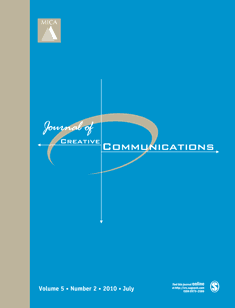
Journal of Creative Communications
Exploring the Frontiers of Innovative CommunicationThe Journal of Creative Communications, published by SAGE PUBLICATIONS INC, stands as a prominent forum within the field of communication, holding a Q2 rank in the Communication category according to the 2023 metrics. With an ISSN of 0973-2586 and an E-ISSN of 0973-2594, this journal offers a comprehensive exploration of inventive communication practices, theories, and methodologies, making it a vital resource for researchers, professionals, and students alike. Since its inception in 2006, the journal has been committed to fostering innovative discourse and scholarly excellence, as evidenced by its Scopus ranking at #157 of 511 in Social Sciences – Communication, placing it in the 69th percentile. While the journal does not currently offer open access options, it continues to maintain a high impact factor through rigorously peer-reviewed contributions. As it converges towards 2024, the Journal of Creative Communications seeks to elevate the discourse surrounding contemporary communication issues, pushing the boundaries of creativity and inquiry in an ever-evolving landscape.
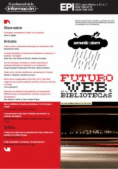
Profesional de la Informacion
Catalyzing Discussion on Contemporary Communication ChallengesProfesional de la Informacion is a leading academic journal dedicated to advancing research in the fields of Communication, Cultural Studies, Information Systems, and Library and Information Sciences. Published by EDICIONES PROFESIONALES INFORMACION SL-EPI, this journal has established itself as a pivotal resource for scholars and practitioners alike since its inception in 2006, holding an impressive Q1 ranking across its categories in 2023. With an impactful presence reflected in its Scopus Rankings—33rd out of 511 in Communication and 26th out of 280 in Library and Information Sciences—Profesional de la Informacion provides a forum for innovative research and discussion. Although it operates under a subscription model, the journal’s commitment to quality research contributes significantly to the knowledge base within its fields, making it an essential read for those who are passionate about information and communication studies. Positioned in the vibrant academic landscape of Barcelona, Spain, this journal encourages submissions that explore contemporary challenges and advancements in these vital areas of study, solidifying its role as a cornerstone of scholarly discourse.
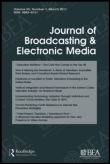
JOURNAL OF BROADCASTING & ELECTRONIC MEDIA
Illuminating the Dynamics of Digital CommunicationThe JOURNAL OF BROADCASTING & ELECTRONIC MEDIA, published by Routledge Journals, Taylor & Francis Ltd, is a premier academic publication in the field of communication, officially recognized in the Q1 category for its exceptional quality and impact. With a rich history dating back to 1985, this journal serves as a vital platform for innovative research and critical discussions surrounding broadcasting and electronic media, addressing contemporary issues in digital communication, media technology, and audience studies. The journal boasts an impressive Scopus rank of #73 out of 511 in the Social Sciences - Communication category, placing it within the top 15% of its field. Researchers, professionals, and students alike benefit from its insightful articles that contribute to understanding the evolving landscape of media and communication. Although it does not currently operate under an Open Access model, its rigorous peer-review process ensures that published works meet high academic standards, sustaining its reputation as a cornerstone for scholarly discourse in the media industry.

Communicare-Journal for Communication Sciences in Southern Africa
Bridging theory and practice in Southern African communication.Communicare: Journal for Communication Sciences in Southern Africa is an esteemed academic publication dedicated to advancing the field of communication studies within the Southern African context. Published by the Randse Afrikaanse Universiteit, Department of Communication, this journal plays a crucial role in disseminating innovative research and insights pertinent to communication practices and theories. With an Open Access model established in 2022, it aims to enhance accessibility to scholarly work, fostering a collaborative environment for researchers, professionals, and students alike. The journal invites contributions that explore diverse aspects of communication from cultural, social, and technological perspectives, highlighting its significance in addressing contemporary challenges within the region. By promoting high-quality research, Communicare stands as an essential resource for anyone invested in the evolving landscape of communication sciences.
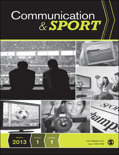
Communication & Sport
Bridging Gaps Between Communication Strategies and Sporting Contexts.Communication & Sport is a premier interdisciplinary journal published by SAGE Publications Inc, dedicated to advancing the understanding of the dynamic interplay between communication processes and sporting contexts. With its ISSN 2167-4795 and E-ISSN 2167-4809, this UK-based journal has established an outstanding reputation within the academic community, as evidenced by its impressive Q1 ranking in both Communication and Social Sciences categories for 2023. Its Scopus ranking, placing it in the top 5th percentile for Social Sciences, underscores its influence and relevance in the field. Communication & Sport serves as an essential resource for researchers, professionals, and students interested in exploring themes of media representation, sport management, fan interactions, and health communication. By offering a platform for innovative research and insightful commentary, the journal aims to foster a deeper understanding of how communication shapes and is shaped by sporting experiences and culture, making it a vital addition to the library of anyone engaged in the study of these interrelated areas.

Frontiers in Communication
Innovating Dialogues in a Dynamic WorldFrontiers in Communication is a prestigious open-access journal published by FRONTIERS MEDIA SA, dedicated to advancing the field of communication studies. Established in 2016 and situated in Switzerland, this journal has quickly ascended to notable ranks, achieving a Q1 category in both Communication and Social Sciences (miscellaneous) as of 2023. With an impressive Scopus rank, positioning it in the 75th and 78th percentiles for its respective categories, Frontiers in Communication serves as a vital platform for innovative research, interdisciplinary dialogue, and the dissemination of knowledge in the rapidly evolving landscape of communication. The journal emphasizes accessibility and intellectual exchange, providing an open-access format that ensures unrestricted access for researchers, professionals, and students alike. By fostering collaboration and exploration across various communication frameworks, Frontiers in Communication plays a crucial role in shaping the future discourse within the field.

Comunicacion y Sociedad-Guadalajara
Exploring critical discourse in the heart of Mexico.Comunicacion y Sociedad-Guadalajara is a distinguished peer-reviewed journal published by UNIV GUADALAJARA that plays a vital role in the field of communication studies. With an ISSN of 0188-252X and an E-ISSN of 2448-9042, this journal has embraced Open Access since 2023, ensuring that groundbreaking research is accessible to a wider audience. Hailing from Mexico, it serves as a platform for innovative research and critical discourse in communication, ranking Q2 in the Communication category and securing a notable Scopus rank of #[232/511, positioning it within the top 54th percentile of its field. Covering converged years from 2009 to 2010 and from 2013 to 2024, the journal's objective is to foster scholarly dialogue and advance knowledge across diverse aspects of communication. With a commitment to excellence, Comunicacion y Sociedad-Guadalajara stands as an essential resource for researchers, professionals, and students seeking to engage with contemporary issues in communication.

Communitas
Cultivating Critical Discourse in a Global ArenaCommunitas, published by the University of the Free State, is an esteemed open-access journal that has been a gateway for innovative research and discourse in the fields of communication, linguistics, and language since its inception in 2017. With an ISSN of 1023-0556 and E-ISSN of 2415-0525, the journal aims to foster scholarly exchange by providing a platform for critical analysis and interdisciplinary collaboration. Although it currently falls into Q4 in Communication and Q3 in Linguistics and Language, *Communitas* has made significant strides in establishing its presence in Scopus rankings—ranking 567 out of 1088 in Arts and Humanities and 397 out of 511 in Communication—and sources for researchers at varying stages of their careers. Addressed to a global readership, the journal invites contributions that enhance understanding and generate new perspectives on socio-linguistic issues and communicative practices, making it a pivotal resource for researchers, academics, and students committed to advancing knowledge in these dynamic fields.